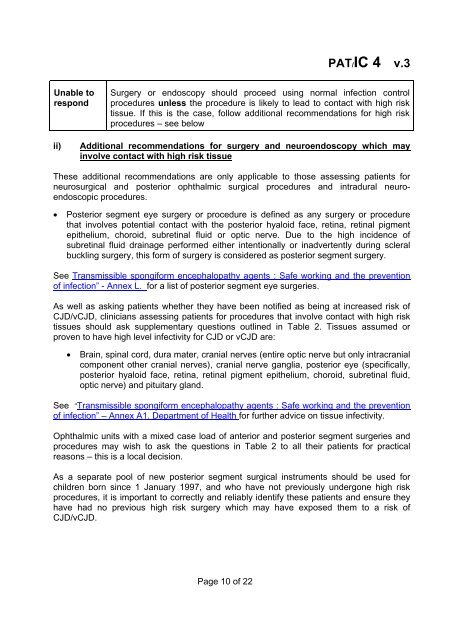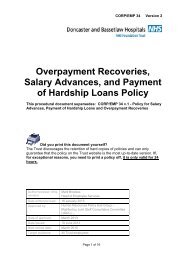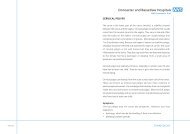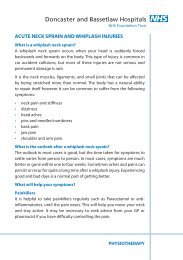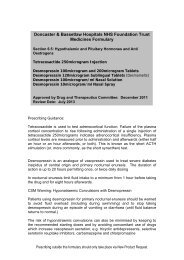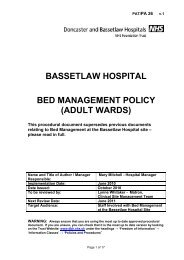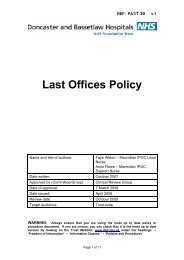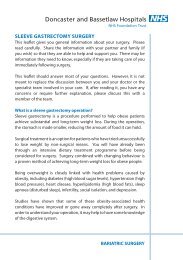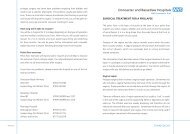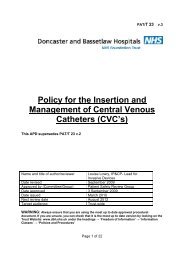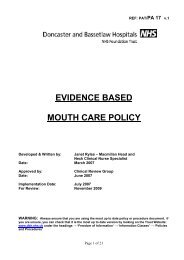VARIANT CREUTZFELDT-JAKOB DISEASE (vCJD) AND ...
VARIANT CREUTZFELDT-JAKOB DISEASE (vCJD) AND ...
VARIANT CREUTZFELDT-JAKOB DISEASE (vCJD) AND ...
You also want an ePaper? Increase the reach of your titles
YUMPU automatically turns print PDFs into web optimized ePapers that Google loves.
PAT/IC 4 v.3<br />
Unable to<br />
respond<br />
Surgery or endoscopy should proceed using normal infection control<br />
procedures unless the procedure is likely to lead to contact with high risk<br />
tissue. If this is the case, follow additional recommendations for high risk<br />
procedures – see below<br />
ii)<br />
Additional recommendations for surgery and neuroendoscopy which may<br />
involve contact with high risk tissue<br />
These additional recommendations are only applicable to those assessing patients for<br />
neurosurgical and posterior ophthalmic surgical procedures and intradural neuroendoscopic<br />
procedures.<br />
• Posterior segment eye surgery or procedure is defined as any surgery or procedure<br />
that involves potential contact with the posterior hyaloid face, retina, retinal pigment<br />
epithelium, choroid, subretinal fluid or optic nerve. Due to the high incidence of<br />
subretinal fluid drainage performed either intentionally or inadvertently during scleral<br />
buckling surgery, this form of surgery is considered as posterior segment surgery.<br />
See Transmissible spongiform encephalopathy agents : Safe working and the prevention<br />
of infection” - Annex L. for a list of posterior segment eye surgeries.<br />
As well as asking patients whether they have been notified as being at increased risk of<br />
CJD/<strong>vCJD</strong>, clinicians assessing patients for procedures that involve contact with high risk<br />
tissues should ask supplementary questions outlined in Table 2. Tissues assumed or<br />
proven to have high level infectivity for CJD or <strong>vCJD</strong> are:<br />
• Brain, spinal cord, dura mater, cranial nerves (entire optic nerve but only intracranial<br />
component other cranial nerves), cranial nerve ganglia, posterior eye (specifically,<br />
posterior hyaloid face, retina, retinal pigment epithelium, choroid, subretinal fluid,<br />
optic nerve) and pituitary gland.<br />
See “Transmissible spongiform encephalopathy agents : Safe working and the prevention<br />
of infection” – Annex A1. Department of Health for further advice on tissue infectivity.<br />
Ophthalmic units with a mixed case load of anterior and posterior segment surgeries and<br />
procedures may wish to ask the questions in Table 2 to all their patients for practical<br />
reasons – this is a local decision.<br />
As a separate pool of new posterior segment surgical instruments should be used for<br />
children born since 1 January 1997, and who have not previously undergone high risk<br />
procedures, it is important to correctly and reliably identify these patients and ensure they<br />
have had no previous high risk surgery which may have exposed them to a risk of<br />
CJD/<strong>vCJD</strong>.<br />
Page 10 of 22


